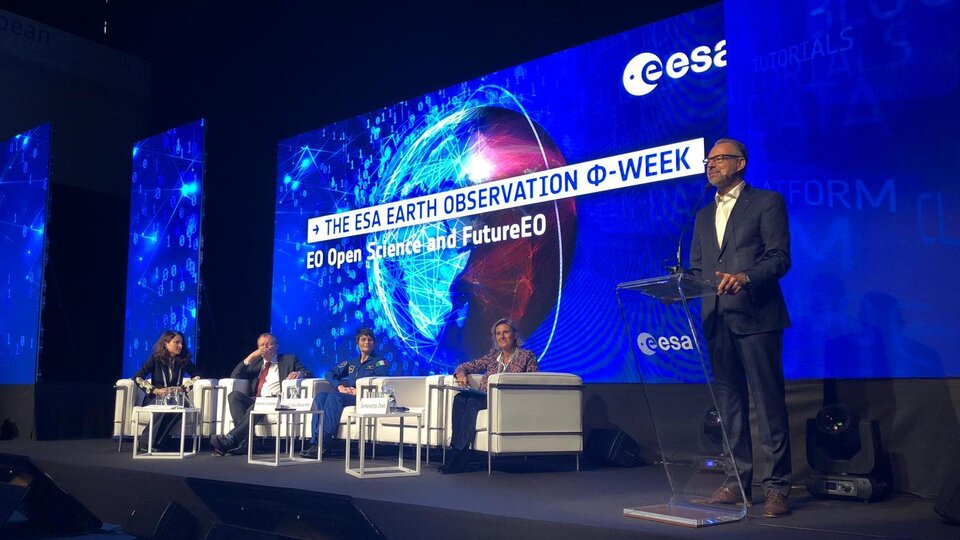Josef Aschbacher on Φ-week
The availability of today’s wealth of satellite data coupled with the latest digital technologies not only offer unprecedented opportunities for monitoring our changing planet, but they also lay a new landscape for innovation and business. In an interview, ESA’s Director of Earth Observation Programmes, Josef Aschbacher, explains how his concept of Φ, pronounced ‘fee’, is set to exploit this golden age and how he hopes the Φ-week event, being held on 12–16 November 2018 in Italy, will further launch new ideas.
Can you explain your concept of ɸ and what you hope to achieve?
In essence, the Greek letter ɸ symbolises perfect harmony, but also the unknown. We are using ɸ to symbolise the future and unknown. We don’t know what the future may hold in terms of technical advances and how this can be used to exploit Earth observation. For example, 10 years ago who would have guessed that artificial intelligence would be as important as it is today? And, indeed, we can only second guess where it will take us in the future. ɸ, for us, depicts future systems, harnessing innovation and the digital revolution to provide information in a more intelligent way and ultimately bringing benefits to all.
How is this different to the more traditional space agency work?
ESA launched its first Earth observation satellite, the first Meteosat weather satellite, in 1977. So we’ve been observing our planet from space for more than 40 years now. The numerous missions and their different measuring techniques, along with missions from other space agencies, have given us an entirely new perspective about the world we live in and the impact we are having on the environment. Today we receive 150 TB of data every day from satellites that ESA has launched, and this allows us to continuously take Earth’s pulse as it were. These data are not only used for monitoring Earth’s health, but are vital for a myriad of practical applications to improve everyday life and sectors, such as agriculture, on which we all depend.

So, we have come a long way in 40 years and this has all been based on what one might say is a traditional way of working. Now, we are very much looking to shape the future by embracing and benefiting from huge advances being made in the field of computing, such as artificial intelligence. This could be thought of as a departure from tradition, so our aim is to remain successful by changing with the times!
We entered a new era for communicating and sharing data with the advent of the internet almost three decades ago, do you feel we are on the brink of another revolutionary period particularly with respect to the amount of satellite data available today?
Absolutely. We have so much satellite data and information available today, but comes from various satellites and instruments. Not just our large traditional missions, but also the smaller satellites being launched by commercial companies. All of this coupled with technological advances, such as artificial intelligence, blockchain, virtual reality and quantum computing, means that we are in what might be thought of as a ‘perfect storm’ – it has all come together at the right time. For Earth observation the aim is to make use of this new digital age to help create an integrated system that brings benefits to all citizens.
Is ɸ applicable to ESA’s Earth observation activities alone, or will ESA as a whole benefit from this new concept?
Admittedly, our focus is largely on the future of Earth observation and to shape it so that we maximise the benefits as much as we possibly can by embracing the digital age and harnessing innovation. However, the same approach certainly applies to the whole of ESA. We are a technical agency developing breakthrough technology for all missions and indeed to launch missions into space, potentially colonise the Moon and so on.
What does ɸ-week entail and what is your overall aim?
Our aim is to offer a platform to explore how the latest applications of transformative technologies are shaping scientific innovation on Earth and in space. With around 700 participants from a range of disciplines, it certainly promises to be an interesting week.




